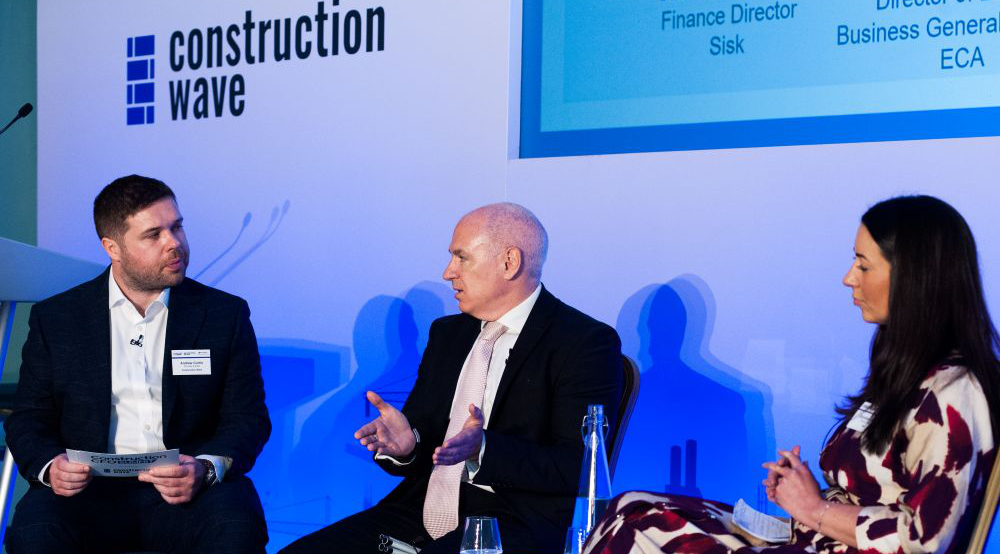Fair Payment Code needs to work together with network of fair and late payment initiatives to add value
| This article appears on the ECA blogsite and was written by Rob Driscoll, director of legal & business, ECA, and Chair of cabinet office SME payment advisory group. |
I was recently invited by ECA Commercial Associate, Pay Apps, to talk on fair payment to the Construction CFOs Summit, hosted by Construction Wave, at the Institute of Directors.
Together with Christina Wilson, Construction Services Finance Director for Sisk, we outlined the limited success the Fair Payment Code has had in under 6 months since it was rebranded from the Prompt Payment Code.
I spoke about the value of codes and charters as a collective watermark around which industry players can coalesce, but also expressed caution as:
- less than 300 signatories existed to the new code.
- its tiered gold silver and bronze system could lead to confusion in the market over the significance of the code.
- bronze simply equates to compliance with the law so had little value, and
- without being a pre-requisite to win more work with major clients like public sector, the code would have limited value in driving uptake and success.
I didn’t write the code off, it has a value, but as part of a wider network of fair and late payment initiatives – including PBAs, digital payment systems, digital parallel project payments, interest and compensation on late payment, and the Procurement Act, to name but a few.
There is a dilemma in this industry which traditionally relies on delayed payment periods. The longer the payment periods are, the less attractive the client is as a long-term prospective commercial partner. In other words, high quality, well managed suppliers migrate to work for fair and well managed clients who pay fairly and on time. Therefore, those that want longer payment periods and pay late, find that only the low quality suppliers will work for them who carry a higher risk of insolvency mid-project.
Disruptors such as Pay Apps have been incredibly useful – by introducing technology to report on payment times/amounts etc., the lid has been lifted making payment data transparent. Many in the mechanical and engineering market now see this technology as a staple of their operational infrastructure to underpin collaborative relationships.
It comes down to balancing risk appetite versus cash-flow versus long-term quality and brand integrity.
As an industry our economic health depends on healthy cashflow and improved payment periods/amounts.
This article appears on teh ECA bnews and blogsite as "Fair Payment Code needs to work together with network of fair and late payment initiatives to add value" dated 26 May, written by Rob Driscoll.
--ECA
[edit] Related articles on Designing Buildings
- Cash flow.
- Causes of construction disputes.
- Collaborative practices.
- Construction client's charter.
- Construction supply chain payment charter.
- Fair Payment Code.
- Fair payment practices.
- Housing Grants, Construction and Regeneration Act.
- Insolvency.
- Net zero commitment will be required for major government contracts.
- Procurement policy note PPN.
- Prompt Payment Code boosted to help SMEs.
- Prompt payment code: the story behind the headlines.
- Progress on poor payment practices.
- Project bank accounts.
- Remedies for late payment.
- Scheme for construction contracts.
- The Late Payment of Commercial Debts Regulations 2013.
- The Reporting on Payment Practices and Performance (Amendment) (No. 2) Regulations 2024.
Featured articles and news
The UK’s largest air pollution campaign.
Future Homes Standard, now includes solar, but what else?
Will the new standard, due to in the Autumn, go far enough in terms of performance ?
BSRIA Briefing: Cleaner Air, Better tomorrow
A look back at issues relating to inside and outside air quality, discussed during the BSRIA briefing in 2023.
Restoring Abbotsford's hothouse
Bringing the writer Walter Scott's garden to life.
Reflections on the spending review with CIAT.
Retired firefighter cycles world to raise Grenfell funds
Leaving on 14 June 2025 Stephen will raise money for youth and schools through the Grenfell Foundation.
Key points for construction at a glance with industry reactions.
Functionality, visibility and sustainability
The simpler approach to specification.
Architects, architecture, buildings, and inspiration in film
The close ties between makers and the movies, with our long list of suggested viewing.
SELECT three-point plan for action issued to MSPs
Call for Scottish regulation, green skills and recognition of electrotechnical industry as part of a manifesto for Scottish Parliamentary elections.
UCEM becomes the University of the Built Environment
Major milestone in its 106-year history, follows recent merger with London School of Architecture (LSE).
Professional practical experience for Architects in training
The long process to transform the nature of education and professional practical experience in the Architecture profession following recent reports.
A people-first approach to retrofit
Moving away from the destructive paradigm of fabric-first.
International Electrician Day, 10 June 2025
Celebrating the role of electrical engineers from André-Marie Amperè, today and for the future.
New guide for clients launched at Houses of Parliament
'There has never been a more important time for clients to step up and ...ask the right questions'
The impact of recycled slate tiles
Innovation across the decades.
EPC changes for existing buildings
Changes and their context as the new RdSAP methodology comes into use from 15 June.

























